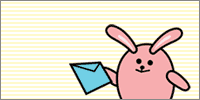Struggling
with how to teach vocabulary? For literacy impoverished students, it
is critical that we expand, develop and are continually building
academic vocabulary.
I love teaching vocabulary. It's possible that it is because I have a rather nerdy love of how words work and the origins of them, but my enthusiasm for it spills over into the classroom. I also know that all kids need solid instruction in developing their "toolbox of words."

We must always be keenly aware that students who do not come from a rich literacy background are already at a distinct disadvantage.
Not only do these kids not know the words, they have no idea how to break them down and use them in a meaningful way. It is up to us to try and fill the gap.
Even if you don't love playing with words, most of your students will (if not all). Children have an innate sense of fun and appreciation for puns, descriptive language and big words. Why not tap into that and teach how Greek and Latin roots and affixes come together to make multi-syllabic words?
And then there is the necessary academic vocabulary. These are the critical words students must know to understand and succeed in certain subjects.
For example, perimeter, quotient and minuend are all necessary words for understanding the language of mathematics. Here is a simple index card game for Tier 3 academic vocabulary that your students are guaranteed to love.
| Research is showing that promoting word consciousness
through deliberate modeling of academic vocabulary can add depth and
substance to students abilities to use and understand more sophisticated
words (The Reading Teacher, 63(5), p. 362). It is a critical factor in developing reading skills, and instruction must be powerful. |
Not to worry: here are some fabulous ideas you can implement tomorrow in your own classroom!
Quick Vocabulary Lessons
1. How to Teach Vocabulary Using a Word of the Day|
This resource comes from Primary Concepts. I have used it for four years and it is a great resource for primary teachers who need some help with their vocabulary lesson plans. |
 |
This is then applied to other words to help students learn how to derive word meaning from looking for the suffix and the root word.
There is not a single worksheet with it, which I love. It is very natural and I use it as part of my floor time each morning. I wrote all of the words onto index cards, underlined the focused part of each vocabulary word and we review them quickly each morning.
This is a fabulous way to promote word consciousness. By the way, I also use another resource by Primary Concepts called Idiom of the Week
2. How to Teach Vocabulary With Nursery Rhymes
Choose a simple nursery rhyme, such as "Twinkle, Twinkle, Little Star" and challenge students to replace as many words as they can with synonyms that are more sophisticated.
I did this as a whole class activity a number of times before providing a gradual release to small groups. Here is what we came up with:
Shimmer, glimmer, miniature orb of fire,
How I ponder what you are.
Up above the globe so high,
Like a quadrilateral in the sky.
Sparkle, glisten, miniature sphere of fire,
How I query what you are.
Look at the academic vocabulary used in this lesson: globe, orb, quadrilateral, sphere…not to mention the adjectives and a great lead in to the word "mini" and how to look for it in other words describing small things (minivan, minuscule, etc).
I guided this, but my second graders could use their background knowledge to relate to these new words and I am seeing them pop up in their writing and hearing them use them in conversations!
Choose a simple nursery rhyme, such as "Twinkle, Twinkle, Little Star" and challenge students to replace as many words as they can with synonyms that are more sophisticated.
I did this as a whole class activity a number of times before providing a gradual release to small groups. Here is what we came up with:
Shimmer, glimmer, miniature orb of fire,
How I ponder what you are.
Up above the globe so high,
Like a quadrilateral in the sky.
Sparkle, glisten, miniature sphere of fire,
How I query what you are.
Look at the academic vocabulary used in this lesson: globe, orb, quadrilateral, sphere…not to mention the adjectives and a great lead in to the word "mini" and how to look for it in other words describing small things (minivan, minuscule, etc).
I guided this, but my second graders could use their background knowledge to relate to these new words and I am seeing them pop up in their writing and hearing them use them in conversations!
3. How to Teach Vocabulary during an Interactive Read Aloud
It doesn't matter what the genre is…you can do this activity with any read aloud.
I always have sticky notes and a pen by my side, and when I find an interesting word during a read aloud I will stop, write it on the sticky note and quickly discuss the meaning of it.
A student then puts in on my Vocabulary Chart. This chart is simply four pieces of paper labeled Nouns, Verbs, Adjectives and Adverbs. For example, today we were reading about penguins and we came across the word sleek which described the outer layer of penguins feathers (we also hit "downy" for the underlayer).
We acted it out to target the kinesthetic learning style that many students have, then added it to the paper labeled "Adjectives," because that is how it was used in the story.
All of this only takes a minute or two: keeping it short so as not to disrupt the actual read aloud too much is key to keeping their attention.
Later the children can take the sticky notes off the paper to use in their writing when they need to. We also use them for sorts according to different characteristics and build bigger words from them (sleeker, sleekest).
4. How to Teach Vocabulary Using Word Wheels
Cut out some large circles. Draw a smaller circle in the middle, then draw spokes out to the edge from it to make 6-8 sections.
Inside the circle put a Greek or Latin root word or affix, along with the meaning of it. The students then brainstorm words with the same root or affix, write them in the sections and illustrate them.
These word wheels should be hung in the classroom as anchor charts for reference the rest of the year. It becomes a word wall that is highly focused on academic vocabulary.
I like to coordinate these with special holidays because those hold great importance in a primary classroom. My Valentine's Word Wheel uses the base word gram which means "write or draw", and the sections have words like: candygram, telegram, cryptogram, gramophone, monogram, and tangram.
Each
word is illustrated for Valentine's Day, with the cryptogram being a
secret "I Love You" message, and the tangram being the shape of a heart.
The younger the students the more direct instruction and guidance is needed, but this is a really neat way to address improving vocabulary in a powerful and robust manner. Plus, it's a lot of fun!
The younger the students the more direct instruction and guidance is needed, but this is a really neat way to address improving vocabulary in a powerful and robust manner. Plus, it's a lot of fun!
sumber : http://www.primary-education-oasis.com/how-to-teach-vocabulary.html#.T-HON2Hdb74


0 komentar:
Posting Komentar